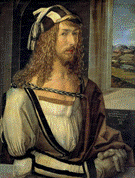Art, Art History and Design, School of
Date of this Version
1996
Abstract
The brothers (1) Sebald Beham and (2) Barthel Beham, whose oeuvre consists mainly of prints, belonged to the third generation of this Nuremberg family and were among the artists known as Little Masters because of the diminutive size of many of their engravings and etchings. They were much influenced by the work of Albrecht Dürer and are often referred to as his “pupils,” though it is unclear if the contact was solely through his prints rather than personal. Sources of inspiration included the work of artists such as Raphael and Marcantonio Raimondi, then widely available in engraved form. Following these Italian models Sebald and Barthel Beham often depicted subjects previously peripheral in German art, such as scenes from Classical mythology, history and everyday life. They and Georg Pencz, a colleague of their early years, shared the radical views on religion and government held by the reformers Andreas Karlstadt (c. 1477-1541) and Thomas Müntzer (c. 1490-1525), in which connection they were all three expelled from Nuremberg on 26 January 1525. At their trial these “godless painters,” as they were called in contemporary documents, asserted that they did not believe in baptism, Christ or transubstantiation; Barthel also refused to recognize the city council as the highest temporal authority (Vogler). However, on November 16 of the same year they were allowed to return to Nuremberg. Barthel soon departed to work for the Bavarian court in Munich; Sebald was based in Nuremberg, though frequently working elsewhere, until c. 1531, when he settled in Frankfurt am Main


Comments
Published in The Dictionary of Art, ed. Jane Turner. New York: Grove, 1996. Volume 3, pp. 505–508. Copyright © 1996 Macmillan Publishers. Used by permission.